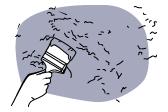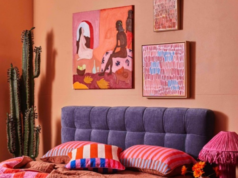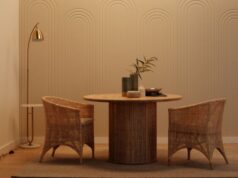
Rendering a brick or stone wall can add significantly to its durability and insulation, and vastly alter the look of your home.
What is render?
Render is a paste-like substance that can be applied to interior and exterior walls. Traditional render is made from a combination of sand and lime mixed with water. Modern renders often have cement or bonding agents added to them. These make the render more durable and assist it in sticking to walls.

Why is render used?
Some building materials have a tendency to deteriorate or rot if they get too wet. An application of lime render will absorb the water before it has a chance to affect the walls, then slowly release it until the render has dried out again. As well as keeping buildings solid, this helps to prevent mould and mildew from growing on walls. Lime render also has the flexibility to expand and contract, so it rarely cracks or breaks until it gets old. Cement can be added to render to make it last longer. Cement render does not absorb water in the same fashion as lime render does though, so if you live in a damp and cold climate, consider using lime-only render.
Render can be used to disguise otherwise unattractive walls. The basic render mixture of sand, cement and/or lime can be varied to provide different colours and textures. For example, it can be used to make a wall finish look fine and smooth, or coarse and textured. Pigment can be applied to render to give your walls a coloured finish, or else a rendered wall can be painted. Tools such as brushes, trowels and sponges are used on the final coat to further manipulate the finished render into a smooth or textured result.
How is render applied?
Render needs to be applied to a completely clean and bare wall to help it adhere, so any old coats of paint and render should be removed with a wire brush. If your wall has any mortar on it, be careful not to damage it during this process. A good tip is to mist your wall down with a mixture of clove oil and water – this will inhibit the growth of mould and mildew. Roughing the surface of the wall in a cross-hatched fashion will help the render to adhere.
If your wall is particularly large and you want the render to look flat and even, one option is to attach some thin wooden members at intervals of a metre along the wall. These can be removed and filled in with the same rendering material once you have applied at least two coats of render. Once the walls have been prepared, the render can then be mixed. It should be noted that the render usually starts to set after half an hour, so only the amount you can use in this time should be prepared to prevent waste.
The first layer should be mixed using a coarsely grained sand, as this will also assist in getting the render to stick to the wall. Once thoroughly mixed, it can then be applied smoothly to the wall using a trowel. The render should be allowed to dry somewhat before beginning the second coat. The second mix can be made with finer sand if a less grainy finish is preferred. The first coat should be misted with water before the second coat is applied in the same fashion as before. A third coat can also be applied if necessary. Depending on whether you would like a textured finish, the final layer can be finished with your choice of sponge or trowel. If the render is to be painted, allow it it to dry completely first.
There’s a significant amount of work involved if you’re rendering a whole house. While it’s not complicated if you know what you’re doing, simple mistakes can be costly and time consuming.
As with most of these kinds of jobs, hiring a professional renderer is a sensible idea if you’re not sure what you’re doing.
Is render easy to maintain?
Render may need repairing occasionally. The frequency will depend on whether the render is indoors or on an exterior wall, and the amount of moisture it is exposed to. Ensure you check your render regularly and repair it if necessary.
|
Advantages
|
Disadvantages
|





